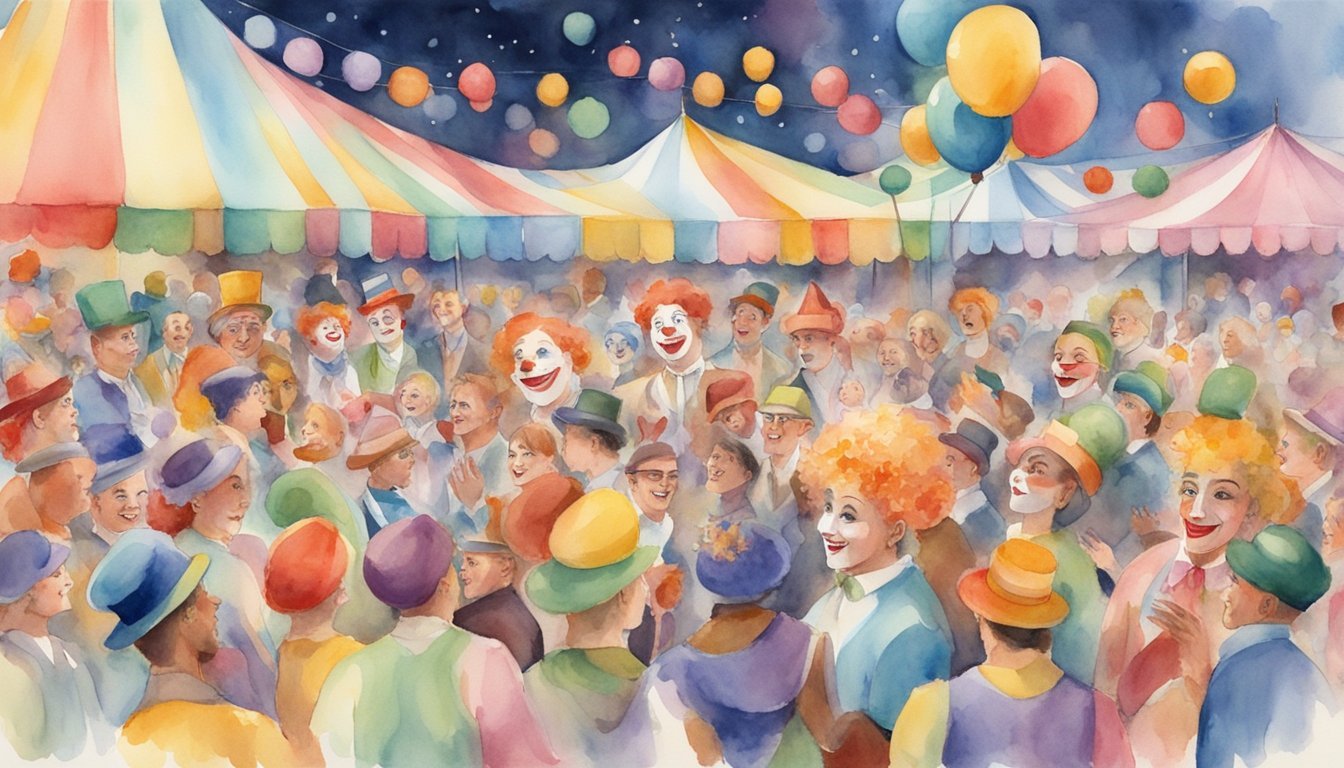The Art and Evolution of Clowns
From their ancient origins to the big tops and television screens of today, clowns have undergone a remarkable evolution. This journey has seen them transform from ritualistic figures to beloved entertainers across various cultures and centuries.
Ancient Roots
Clowns trace their ancestry back to the jesters and comedic performers of ancient civilizations. In ancient Rome, clowns were part of the wider entertainment tapestry, performing humorous interludes during otherwise solemn events. Similarly, in ancient Greece, clowns contributed to the theatrical tradition, often playing satirical roles in plays and farces.
Rise in Europe
The Middle Ages saw the rise of the court jester, a regular fixture in royal courts throughout Europe, known for their sharp wit and ability to speak truths others couldn’t. One famous example is the English jester, who often appeared in Shakespeare’s works, reflecting the societal role jesters played. Moving into the 16th and 17th centuries, the harlequin figure emerged within the Italian Commedia dell’arte, marking a significant milestone in clowning history. London in the 19th century witnessed Joseph Grimaldi, often revered as the father of modern clowning. Grimaldi’s transformation of the art form led to a new era of clowning that deeply influenced the performances we’re familiar with today.
Modern-Day Clowns
In contemporary times, clowns have continued to adapt, often found in circuses and children’s entertainment. Philip Astley, credited with creating the modern circus, showcased clowns as central figures, integral to the circus experience. The mime, with its origins tied to the art of pantomime and similar to the clown in its performance style, also maintains a presence in modern entertainment. Today, clowns have expanded beyond live performance, appearing in various media, and continue to evolve with new interpretations of the ancient craft.
Clowns in Contemporary Culture

In contemporary culture, clowns are seen in various spectrums, ranging from entertainment to fear-inducing characters in media and films. They have adapted to contemporary tastes, often embodying a blend of tradition and modernity. Some clowns retain their classic whimsical charm, performing in circuses and children’s parties, while others take on eerie personas that fuel urban legends and horror stories. This duality raises curiosity about other myths and mysteries, prompting some to ask questions like, are zombies real or if such fears stem purely from imagination. Regardless of their portrayal, clowns continue to captivate and unsettle audiences worldwide.
Circus and Performance
Circus clowns have been a staple in American circuses since the 1880s, becoming an essential aspect of the circus experience alongside acrobats and animal acts. Despite changes in society, classic clown archetypes continue to persist, evolving their performances to incorporate new elements of pantomime and theatrics. Renowned figures such as Emmett Kelly, known for his portrayal of the sad clown figure “Weary Willie,” have shaped the profession, affecting how clowns are viewed in the context of performance art.
In Film and Media
Clowns in cinema and television often embody a complex range of characteristics, from humor to horror. Stephen King’s “It,” featuring the terrifying entity Pennywise, has become synonymous with the scary clown trope, contributing significantly to the portrayal of clowns in horror films. At the same time, characters like Krusty the Clown from “The Simpsons” employ humor to depict clowns in a more positive, albeit satirical, light. Clowns have also been a core part of advertising, with Ronald McDonald becoming an iconic mascot for McDonald’s, demonstrating the commercial and cultural impact of clowns.
Public Perception and Phobias
Public perception of clowns is diverse, with a dichotomy between enjoyment and discomfort. While some associate clowns with the joy and laughter of childhood events and performances, others experience coulrophobia, a fear of clowns. Incidents like the portrayal of John Wayne Gacy as Pogo the Clown have further influenced the perception of clowns in society, linking them to fear and danger in the public consciousness. This complex public reception speaks to the deep-rooted cultural and emotional responses that clowns trigger, being woven into the fabric of societal norms and phobias.

